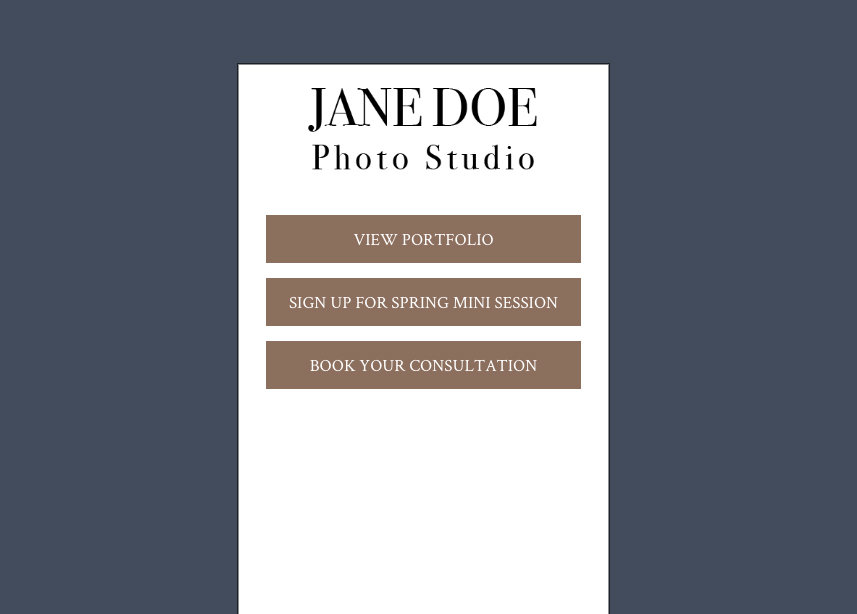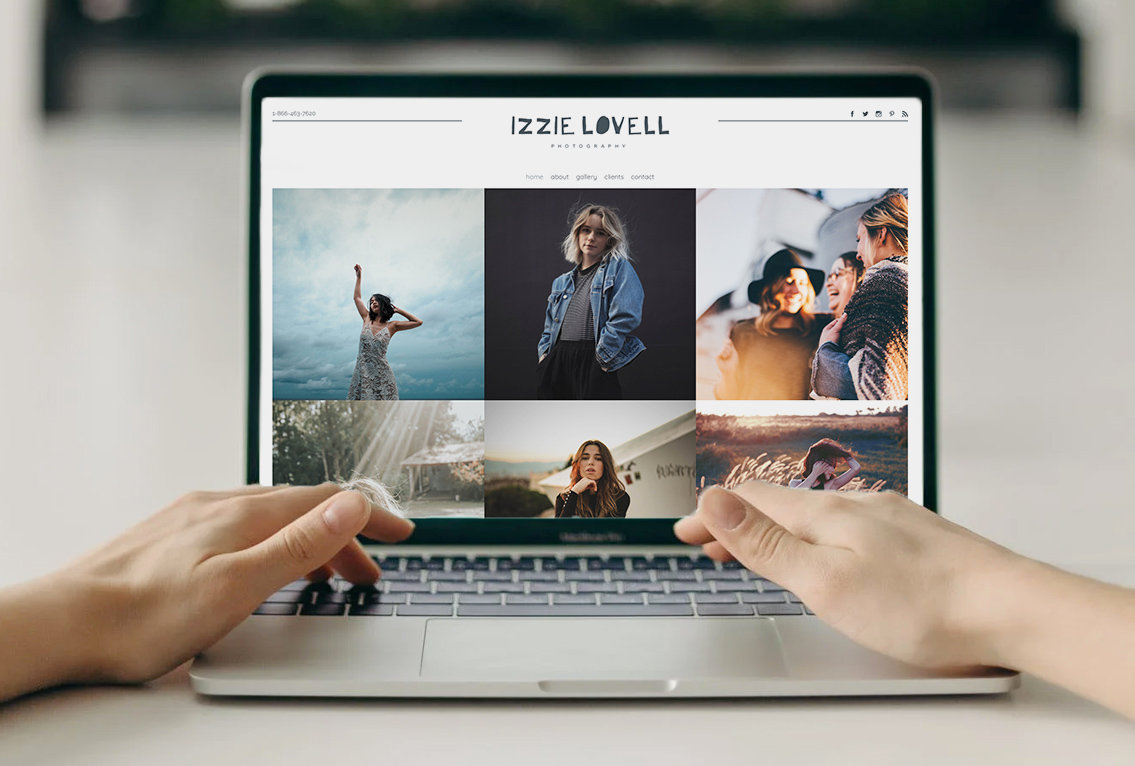Our SEO Team can’t stress enough how important Blogging is for your website – especially for photographers and small business owners. It's one of the best ways to connect with new clients, raise awareness about what you offer, share what you've been up to, and promote seasonal options or specials.
As a person with a full-time job and other responsibilities, however, we know how hard it can be to start a blog from scratch and expect to update it consistently. That’s why we want to share with you a template that we use all the time for blogs that will make both potential clients and Google happy.
#1: Blog Title
The title is your hook: it’s meant to be both informative and compelling all at once. If you don’t spend time thinking through a title that will captivate your audience, your blog article will fall flat.
Remember 3 things when developing your title: Keep It Simple, Keep It Informative, and Keep It Relevant. If your blog article is about Senior Photography, stick to the topic. You can mention your wedding and family services in separate blog posts.
#2: The Opening Sentence
You’ve grabbed a user's attention from your site, social media, or email and sent them to your blog. Now what? Well, they’re here because something you said or showcased piqued their interest. The first sentence or two should accurately describe that something.
For instance: If this is a blog article about a Senior Session with Sarah in the City Center Park of Sydney and there was something serendipitous (ok, enough alliteration) about this particular client, this is a great place to put it.
“Today’s Senior Photography Session with Sarah in City Center Park in Sydney was great! She’s such a natural, and I loved working with her!”
By creating this informative opening sentence, you’ve given readers a short and interesting description of exactly what they came for. You’ve also included keywords in your text (something that makes Google happy).
#3: Images
So if this Senior Session with Sarah in Sydney is what captivated users to read to your blog, it's safe to assume that their primary reason for visiting your site is to see pictures!
Moderation is key here: we don’t want to make the user feel slighted, but we don’t want them to feel like they’ll be scrolling for days, either. Not only that, but if you have too many images it may create loading time issues for users with a slow internet connection (we're looking at you, mobile phone users!).
So depending on the story you’re looking to tell with the blog article, we recommend no less than 4 images and no more than 20 images per blog article.
#4: Additional Content/Text
After your title, opening sentence, and initial image, you can begin to flesh out the rest of your blog post. You can split up content blocks and images however you like!
For Example:
- Pictures, Content
- Content, Pictures
- Pictures, Content, Pictures, Content
- Content, Pictures, Content… You get the point.
Again, moderation is key: there will be posts that require minimal text, and others that need more. Don’t bloat your post with extra words just because you think it will make Google happy. At the same time, don't leave readers feeling lost or confused by writing too little. The goal is to engage readers throughout the entire post, from beginning to end. To do that, simply remain on-topic and don't ramble.
At a minimum, your posts should be no shorter than 1-2 paragraphs, with 3-5 sentences apiece. This will ensure that your blog post has enough text to keep readers engaged, as well as provide complete meta data to search engines.
#5: The Call To Action
At the end of the day, your blog is for your business. If used effectively, it can and should be generating leads for you. This requires a shift in thinking about the people reading your blog.
The typical reader that stumbles on your post from Facebook, Google Search, word-of-mouth, etc. is here for entertainment. It’s your job to help a casual visitor think, “Hmm, I might actually want to hire this person.” How do we do that? With a call to action.
A call to action is a direct instruction or request for the reader to do something specific. In this situation, the request could be “Check out more related articles!” or “Contact me about booking your own session.”
To do this, you’ll want to place a link or button at the end that invites users to learn more. There should also be an opportunity to contact you directly from the blog article – either with a form on the page, or a link to the contact us form (preferable).
Final Thoughts
A few final thoughts on optimizing your posts:
Remember that your blog represents your brand, your business, and you professionally. Therefore SPELL-CHECK YOUR BLOGS BEFORE POSTING THEM. Make sure there are no grammatical, spelling, or other types of errors.
Do not rant: remember that this blog is visible to EVERYONE. Therefore, bad-talking other businesses, brands, clients, etc. is a big no-no as this can hurt your potential for future business.
Consistency is key: the only thing that’s worse than not having a blog is having a blog that you update bi-annually.
Share, share, share. No one just SEES your blog article once you post it. It’s on you to get the word out about this post by any means necessary: social media, email blast, word of mouth, etc.
If you want to discuss blog strategy, how it relates to SEO, or your SEO in general, there’s a service for that! Contact our Support Team and ask about our SEO Go service






Leave a comment
4 Comments
Jul 6, 2021, 6:02:06 PM
John K. from PhotoBiz - Great suggestion Renee! We're considering adding this as a future release, I'll make sure you're on the list of clients that have requested it so that we can tell you if/when it's ready.
Jun 4, 2021, 7:03:53 PM
Renee - I wish there was a way for the date not to show when the blog was published. Hard to do evergreen material with a dated blog post.
Mar 24, 2017, 9:05:27 AM
Mirko Mejia - Great blog article, very informative and helpful!
May 20, 2016, 7:55:26 AM
Hashim Warren - Alex, I love how the smart advice you give in this blog post...
is demonstrated by this blog post!